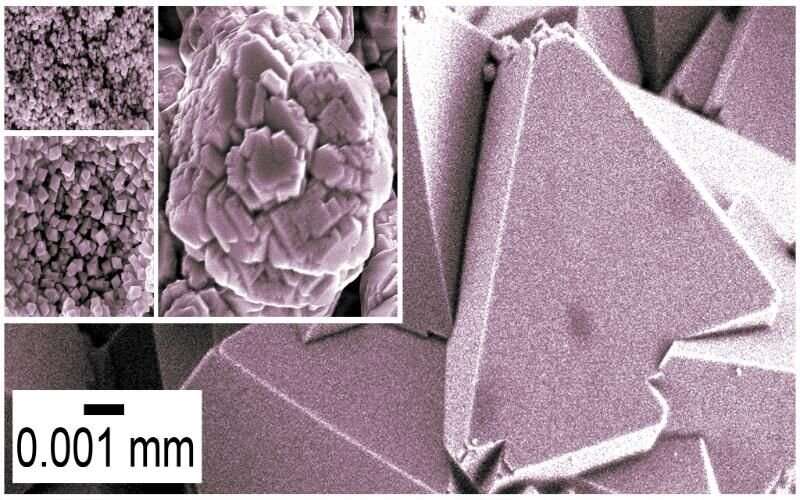This article has been reviewed according to Science X's editorial process and policies. Editors have highlighted the following attributes while ensuring the content's credibility:
fact-checked
peer-reviewed publication
trusted source
proofread
Scientists synthesize cerium mineral that holds promise for biomedical research

Trinity geoscientists have developed a cheap and environmentally friendly method for the synthesis of the rare earth mineral which holds promise for the treatment of diseases associated with inflammation, including cancer.
The study, published this week in the journal RSC Advances, also provides new understandings of the occurrence and behavior of cerianite in natural deposits. The research also expands our knowledge about the exploration, exploitation, and extraction of rare earth minerals (REEs).
The findings also have implications for biomedical research, the production of carbon neutral technologies and the material sciences.
Adrienn Maria Szucs, Ph.D. researcher in Geochemistry in Trinity's School of Natural Sciences, and lead author of this study, explained, "We killed two birds with one stone because we found out why cerianite is associated with REE-carbonates and how exactly it forms in nature and at the same time we produced a cooking book for material engineers with easy recipes for the synthesis of Ce-carbonates and cerianite with different sizes and shapes. On the top of that, the synthesis methods are cost and environmentally efficient. Very convenient."
Cerianite or cerium-oxide (CeO2) is a widely used compound used in the sectors (e.g., energy, transportation, electronics and health care). It is also a highly promising material for biomedical research due to its antioxidant properties. For example, cerianite nanoparticles are being investigated as therapeutic agents for the treatment of diseases associated with oxidative stress and inflammation, including cancer.
Dr. Juan Diego Rodriguez-Blanco, Associate Professor in Nanomineralogy in Trinity's School of Natural Sciences, and lead author added, "Our simple method allows for the production of cerianite with different sizes and shapes. The smallest particles are just a few nanometers and the largest 50 micrometers. This will be useful in biomedical sciences, production of carbon neutral technologies and material sciences."
What have the researchers discovered?
In the study, the researchers synthetized cerianite using various methods with various shapes and sizes by using different crystallization routes, some of them mimicking natural processes.
They combined two simple fabrication methods at low temperatures. By adjusting parameters such as temperature, duration of the experiment and concentration, they found that cerianite can form via cerium carbonates, acting similarly to other rare earths (e.g., La, Pr, Nd and Dy); however, cerium carbonates eventually decarbonize and form cerianite.
Their methods provide primary information on the synthesis of nanometric and micrometric cerium carbonate and cerianite. These methods are non-toxic and use common chemicals; thus, it is energy- and material-efficient and can be easily replicated.
More information: Adrienn Maria Szucs et al, The role of nanocerianite (CeO2) in the stability of Ce carbonates at low-hydrothermal conditions, RSC Advances (2023). DOI: 10.1039/D3RA00519D. pubs.rsc.org/en/content/articl … g/2023/ra/d3ra00519d
Journal information: RSC Advances
Provided by Trinity College Dublin





















